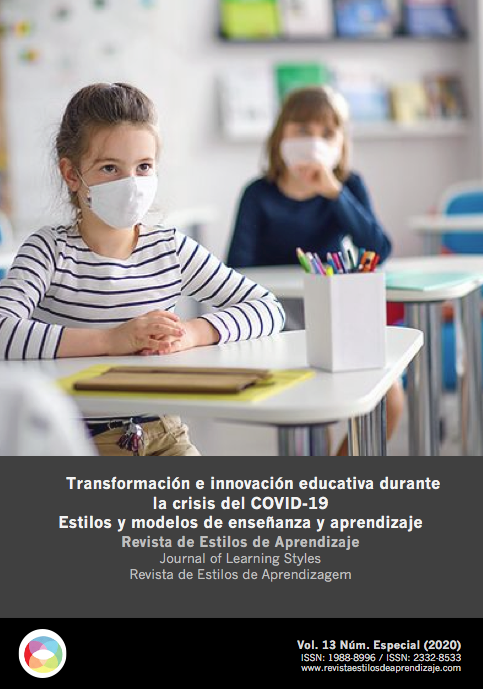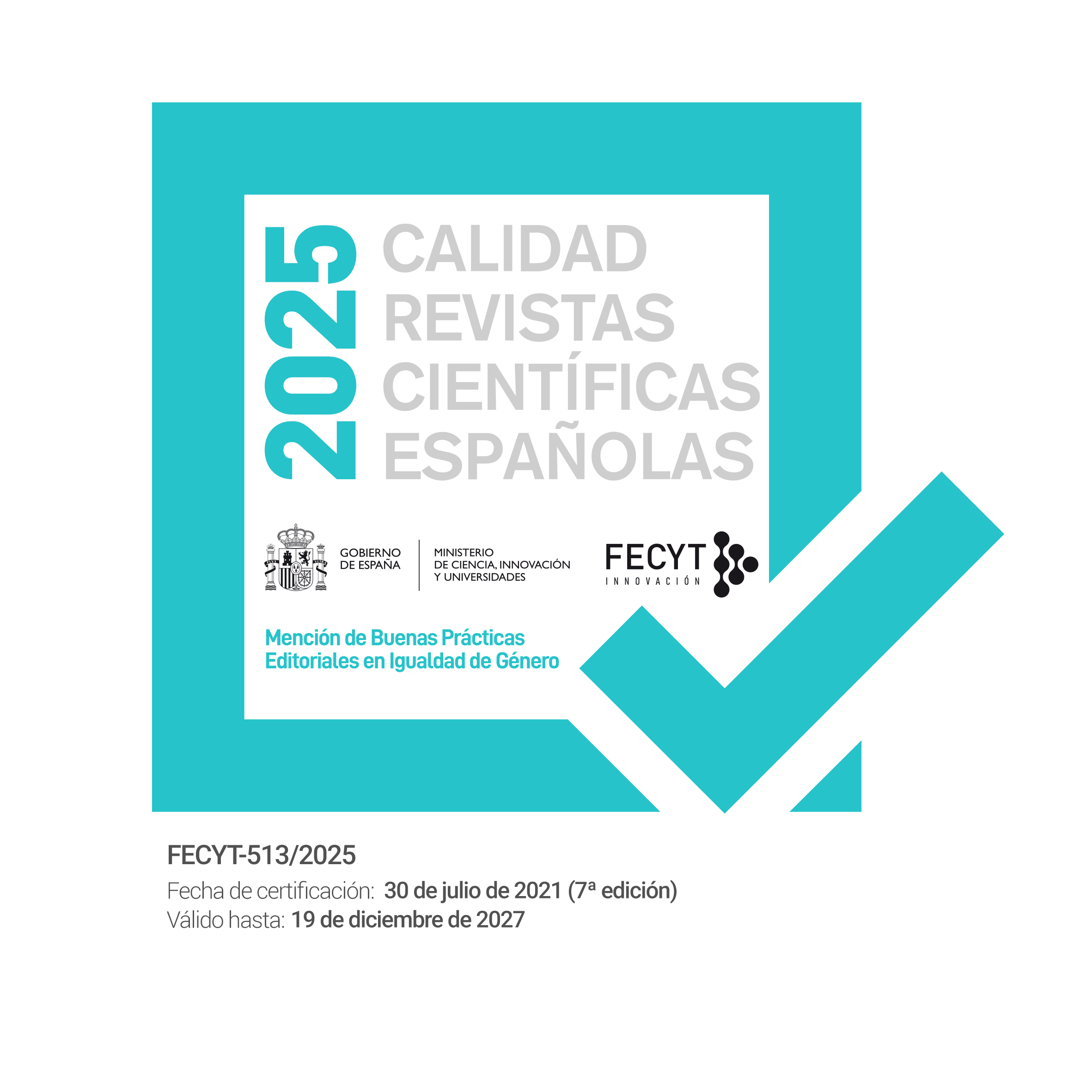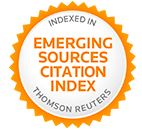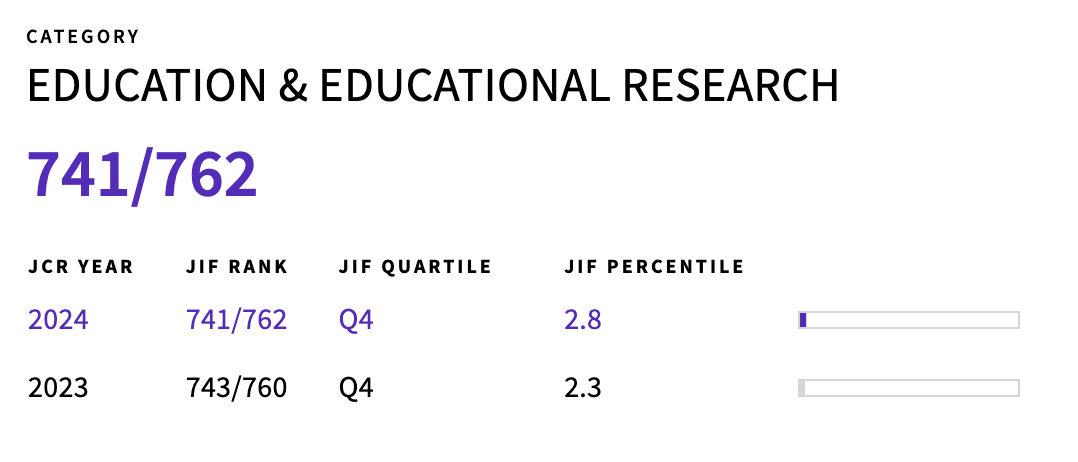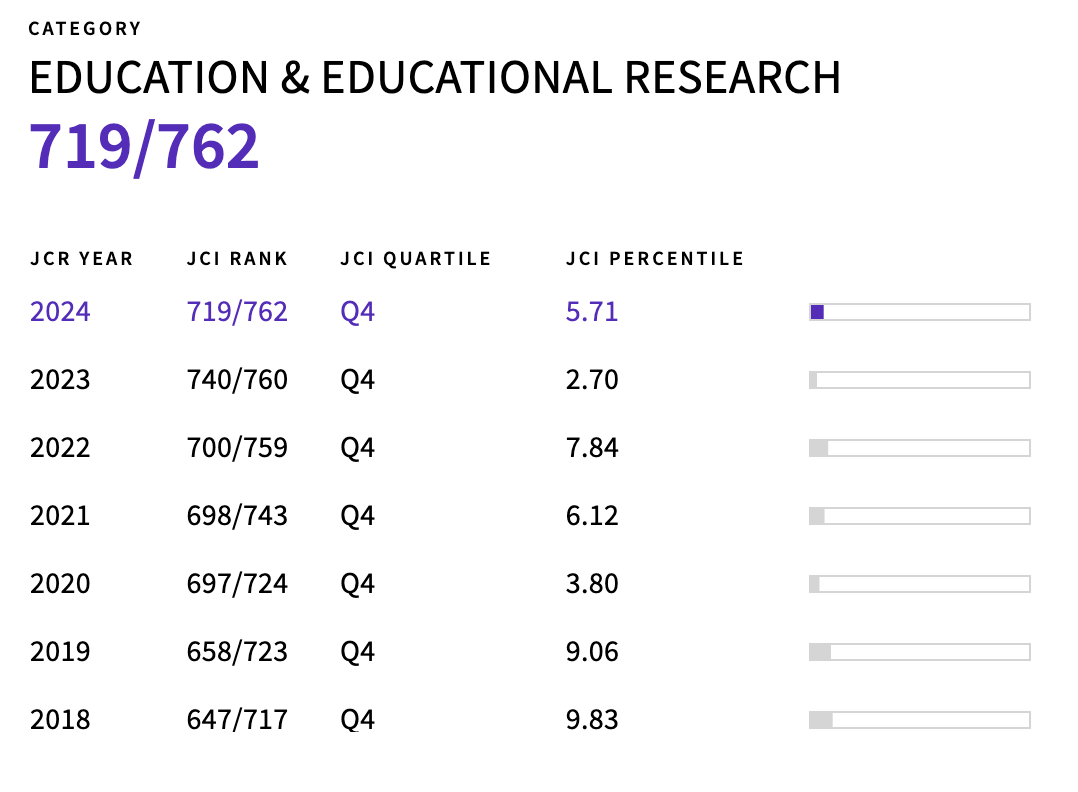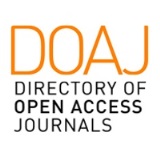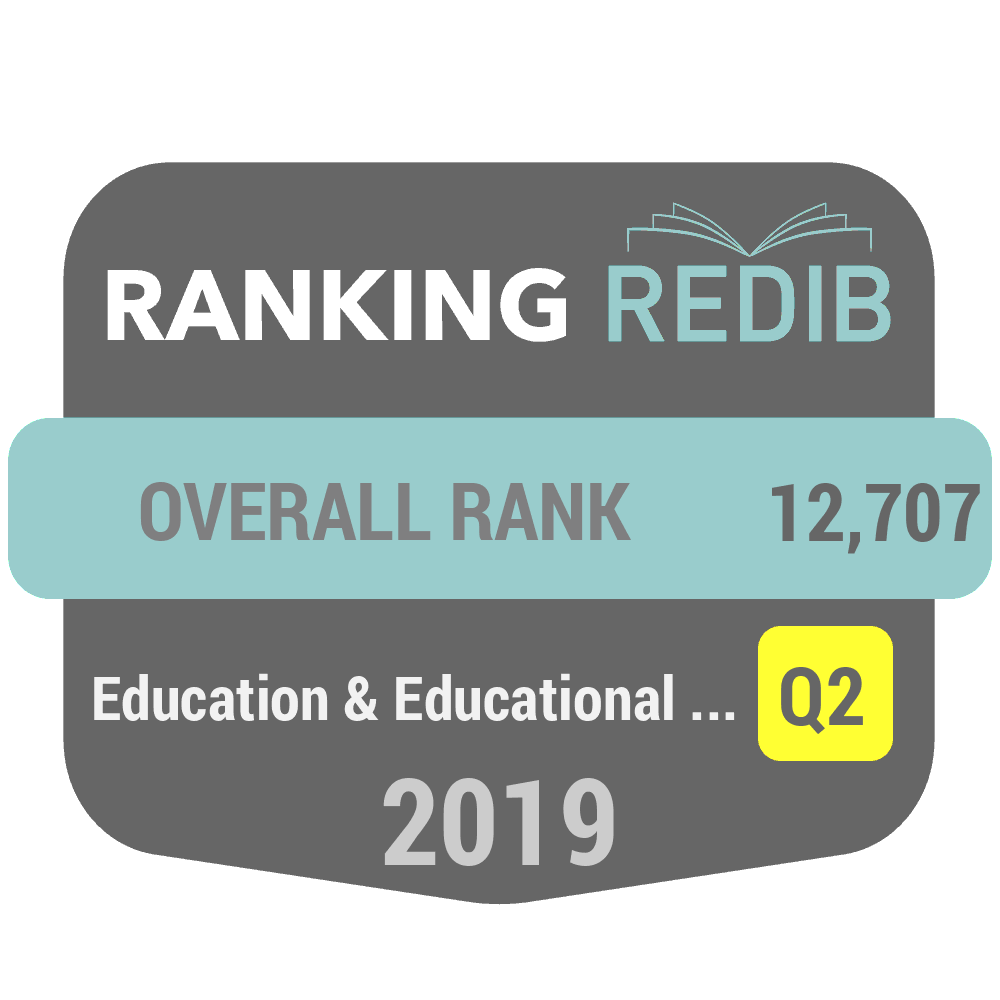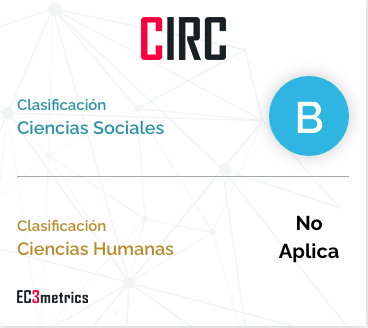Online learning and Covid-19: The need to keep reinventing
DOI:
https://doi.org/10.55777/rea.v13iEspecial.2149Keywords:
COVID-19, Distance learning, University, Economy, E-LearningAbstract
The coronavirus crisis has meant a forced change in practically all areas, including education. Both students and teachers have had to adapt quickly to distance education and the use of new technologies to teach and/or receive teaching. However, despite the fact that the importance of using technology has been promulgated for years, many have been caught off guard. It has been found that it is becoming quite difficult to adapt easily to this new modality, despite the efforts of students and teachers. In order to improve online teaching, it will be necessary to provide more training for teachers and a different vision that will allow students to focus on this new virtual system. In this line, for students of Economics, we propose an exercise to be carried out virtually, with which they can acquire the necessary skills of a part of the subject, with the indications of the teacher, and at the same time understand the reality of today's world from the economic point of view, relating the GDP with the situation produced by the Covid-19.
Downloads
References
Akkoyuklu, B. y Soylu, M.Y. (2006). A study on students` views on blended learning environment. Turkish Online Journal of Distance Education, 7(3), 43–56. Recuperado de: https://dergipark.org.tr/en/download/article-file/156422
Allen, E y Seaman, J. (2014). Grade Change, Tracking Online Education in the United States. Babson Survey Research Group and Quahog Research Group. Recuperado de: http://www.onlinelearningsurvey.com/reports/gradechange.pdf
Allen, E., y Seaman, J. (2013). Changing course: Ten years of tracking online education in the United States. Babson Survey Research Group and Quahog Research Group. Recuperado de: http://www.onlinelearningsurvey.com/reports/changingcourse.pdf
Area, M. y Adell, J. (2009). eLearning: Enseñar y aprender en espacios virtuales. En J. De Pablos (Coord.): Tecnología Educativa. La formación del profesorado en la era de Internet. Aljibe, Málaga, 391-424.
Bates, W. y Bates, T. (2005). Technology, E-learning and Distance Education. Published by Routledge.
Berns, A., Palomo-Duarte, M., Isla-Montes, J. L., Dodero, J. M., y Torre, P. (2017). Agenda colaborativa para el aprendizaje de idiomas: del papel al dispositivo móvil. RIED. Revista Iberoamericana de Educación a Distancia, 20(2), 119-139. DOI: 10.5944/ried.20.2.17713.
Boggess, L.B. (2020). Innovacion en la capacitacion docente online: un modelo organizacional para brindar apoyo a largo plazo a la docencia online. Revista española de pedagogia, 78 (275), 71–85. DOI:10.22550/REP78-1-2020- 01
Borstorff, P.C., y Lowe, S.L. (2007). Student perceptions and opinions toward e-learning in the college environment. Academy of Educational Leadership Journal, 11(2), 13–30. Recuperado de: https://www.abacademies.org/articles/aeljvol11no22007.pdf
Comisión Europea (2001). The eLearning Action Plan: Designing tomorrow’s education. Recuperado de: http://www.elearningeuropa.info.
Delgado Rodríguez, S. y Fernández González, M. (2018). Análisis de la implantación de las TIC en la Educación Secundaria. Tendencias tecnológicas actuales. Revista de Estilos de Aprendizaje, 11(22), 109–136. Recuperado de: http://revistaestilosdeaprendizaje.com/article/view/1082
Dublin, L. (2003). If you only look under the street lamps……Or nine e-Learning Myths. The eLearning developers’ journal. Recuperado de: http://www.eLearningguild.com
Elmehdi, H., Ibrahim, A. y Haba, U. (2013). An Evaluation of Web-based Homework (WBH) Delivery Systems: University of Sharjah Experience. International Journal of Emerging Technologies in Learning, 8(4), 57–62. DOI: 10.3991/ijet.v8i4.2966
Fernández-Gubieda, S. (2020). DOCENCIA RUBIC. Aprendizajes de la enseñanza universitaria en tiempos de la covid-19. Navarra: EUNSA.
Fojtík, R. (2018). Problems of distance education. ICTE Journal, 7(1): 14−23. DOI: 10.2478/ijicte-2018-0002.
García Ruiz, R., Aguaded Gómez, J.I. y Bartolomé Pina, A.R. (2018). La revolución del blended learning en la educación a distancia. Revista Iberoamericana de Educación a Distancia, 21(1), 25-32. DOI: 10.5944/ried.21.1.18842
García-Peñalvo, F.J., Corell, A., Abella-García, V., y Grande, M. (2020). La evaluación online en la educación superior en tiempos de la COVID-19. Education in the Knowledge Society, 21(12). DOI: 10.14201/eks.23013
García-Peñalvo, F.J. (2020). Acciones para la adaptación de la docencia a la modalidad online en la Universidad de Salamanca ante la pandemia de la COVID-19. Jornadas Docentes USM: Nuevos tiempos exigen Modelos Docentes Innovadores. DOI:10.5281/zenodo.4000307
Gil Quintana, J. (2018). Interconectados apostando por la construcción colectiva del conocimiento. Aprendizaje móvil en educación infantil y primaria. Universidad Nacional de Educación a Distancia (UNED). Pixel-Bit Revista de Medios y Educación: España. DOI:10.12795/pixelbit.2019.i54.10
Gotschall, M. (2000). E-learning strategies for executive education and corporate training. Fortune 141(10), 5–59. DOI:10.1177/016264340201700303
Greenberg, G. (1998). Distance education technologies: Best practices for K12 settings. IEEE Technology and Society Magazine, 36-40. DOI: 10.1109/44.735862
Halcrow, C. y Dunnigan, G. (2013). Online homework in calculus I: Friend or foe? Computers & Education, 62, 171-180. DOI: 10.1080/10511970.2012.694015
Hameed, S. Badii, A. y Cullen, A. J. (2008). Effective e-learning integration with traditional learning in a blended learning environment. In: European and Mediterranean conference on information systems (EMCIS 2008), Al Bostan Rotana, Dubai, UAE.
Holmes, B. y Gardner, J. (2006). E-Learning: Concepts and Practice. London: SAGE Publications
Ismail, M., Mokhtar, W.Z.; Nasir, N.N.; Rashid, N.R. y Ariffin, A.K. (2014). The development of a web-based homework system (WBH) via TCExam. Mediterranean Journal of Social Sciences, 5(15). DOI:10.5901/mjss.2014.v5n15p249
Juhdi, N., Samah, A y Sarah, H. (2007). Use of Technology, Job Characteristics and work outcomes: A case of Unitary Instructors. International Review of business Research papers, 3(2), 184–203. Recuperado de: http://irep.iium.edu.my/24406/
Keegan, D. (Ed.) (1993). Theoretical principles of distance education. London and New York: Routledge.
Keller, C. y Cernerud, L. (2002). Students’ perception of e-learning in university education. Learning, Media and Technology, 27(1), 55–67. DOI: 10.1080/1358165020270105
Klein, D. y Ware, M. (2003). E-learning: new opportunities in continuing professional development. Learned publishing, 16(1), 34–46. DOI:10.1087/095315103320995078
Klimová, B. (2015) Teaching and Learning Enhanced by Information and Comunication Technologies. Procedia – Social and Behavioral Sciences, 186, 898-902 DOI: 10.1016/j.sbspro.2015.04.112
Lai, C.-L., y Hwang, G.-J. (2014). Effects of mobile learning time on students’ conception of collaboration, communication, complex problem– solving, meta–cognitive awareness and creativity. International Journal of Mobile Learning and Organisation, 8(3-4), 276–291. DOI:10.1504/IJMLO.2014.067029
Larreamendy-Joerns, J. y Leinhardt, G. (2006). Going the distance with online education. Review of Educational Research, 76(4), 567–605. Recuperado de: http://www.jstor.org/stable/4124415
Liaw, S.S. y Huang, H.M. (2003). Exploring the World Wide Web for on-line learning: a perspective from Taiwan. Educational Technology 40(3), 27–32. Recuperado de: https://www.jstor.org/stable/44428833
Liu, Y., y Wang, H. (2009). A comparative study on e-learning technologies and products: from the East to the West. Systems Research & Behavioral Science, 26(2), 191–209. DOI: 10.1002/sres.959
López Berlanga, M.C, Vieira Barros, D.M. y Sánchez Romero, C. (2019). El estilo de uso del espacio virtual de internet con estudiantes de Educación Secundaria. Revista de Estilos de Aprendizaje, 12(24), 77–88. Recuperado de: http://revistaestilosdeaprendizaje.com/article/view/1389
Lunsford, M.L. y Pendergrass, M.H (2016). “Making Online Homework Work,” PRIMUS: Problems, Resources, and Issues in Mathematics Undergraduate Studies. Special Issue on Teaching with Technology, 26, 531–544. DOI: 10.1080/10511970.2015.1110219
Marín Díaz, V., Reche Urbano, E. y Maldonado Berea, G.U. (2003). Ventajas e inconvenientes de la formación online. Revista Digital de Investigación en Docencia Universitaria, Año 7, 1, 33–43. DOI:10.19083/ridu.7.185
Moreno-Correa, S-M. (2020). La innovación educativa en los tiempos del Coronavirus. Salutem Scientia Spiritus, 6(1),14-26. Recuperado de: https://revistas.javerianacali.edu.co/index.php/salutemscientiaspiritus/article/view/2290
Oblinger, D.G. y Hawkins, B.L. (2005). The myth about E-learning. Educause review. 40(4), 14-15. Recuperado de: https://er.educause.edu/articles/2005/1/the-myth-about-elearning
OCDE (2005). E-learning in Tertiary Education. Policy Briefs. Recuperado de: http://www.oecd.org/dataoecd/27/35/35991871.pdf
Proctor, M.D. y Marks, Y. (2013). A survey of exemplar teachers' perceptions, use, and access of computer-based games and technology for classroom instruction. Computers & Education, 62(1), 171–180. DOI: 10.1016/j.compedu.2012.10.022
Rappoport, S.; Rodríguez Tablado, M.S. y Bressanello, M. (2020). Enseñar en tiempos de COVID-19. Una guía teórico-práctica para docentes. UNESCO.
Reimers, F. y Schleicher, A. (2020). Un marco para guiar una respuesta educativa a la pandemia del 2020 del COVID-19, CIAE, Universidad de Chile, OCDE. Recuperado de: https://n9.cl/xnkbv.
Saba, T. (2012). Implications of e-learning systems and self-efficiency on students’ outcomes: a model approach. Human-centric Computing and Information Sciences, 2(6), 1–11. DOI:10.1186/2192-1962-2-6
Simonson, M. Smaldino, S. Albright, M. y Zvacek, S. (2009). Teaching and learning at a distance education. (4a. Ed.). Boston, M.: Pearson.
Tao, Y. H., Yeh, C.R., y Sun, S.I. (2006). Improving training needs assessment processes via the Internet: system design and qualitative study. Internet Research, 16 (4), 427–49. DOI: 10.1108/10662240610690043
Tibi, M. y Tibi, L. (2015). Distance Learning: What are its Strengths and Pitfalls? Recuperado de : https://n9.cl/3gxcf.
Twigg, C. (2002). Quality, cost and access: the case for redesign. In The Wired Tower. Pittinsky MS (ed.). Prentice-Hall: New Jersey.
Van de Vord, R. (2010) Distance students and online research: Promoting information literacy through media literacy. The Internet and Higher Education. 13(3), 170-175. DOI:10.1016/j.iheduc.2010.03.001
Viner, R., Russell, S., Croker, H., Packer, J., Ward, J., Stansfield, C., Mytton, O., Bonell, C. y Booy, R. (2020). School closure and management practices during coronavirus outbreaks including COVID-19: a rapid systematic review. The Lancet Child & Adolescent Health. DOI:10.1016/S2352-4642(20)30095-X
Wentling, T.L, Waight, C., Gallagher, J., La Fleur, J., Wang, C. y Kanfer, A. (2000). E-learning - a review of literature. Knowledge and Learning Systems Group NCSA 9, 1–73. Recuperado de: https://n9.cl/9bgem
Xie, K., Yu, C. y Bradshaw, A.C. (2014). Impacts of role assignment and participation in asynchronous discussions in college-level online clases. Internet and Higher Education, 20, 10–19, DOI:10.1016/j.iheduc.2013.09.003
Young, J.R. (1997). Rethinking the Role of the Professor in an Age of High-Tech Tools. The Chronicle of Higher Education, 44(6), 26-28. Recuperado de: https://eric.ed.gov/?id=EJ552453
Zhang, D., Zhou, L., BrIggs, R. y Nunamaker, J. (2006). Instructional video in e-learning: Assessing the impact of interactive video on learning effectiveness. Information & Management, 43 (1), 15–27. DOI: 10.1016/j.im.2005.01.004
Downloads
Published
How to Cite
Issue
Section
License
By submitting the original, the author(s) declare that they are aware of and accept, in full, the privacy policy as well as the copyright of the Learning Styles Magazine.
The Learning Styles Magazine offers free and open access to its content, completely free of charge, in order to bring scientific research to its readers and society in general. All digital contents are free and open access and are published under a Creative Commons license:

Rights are granted under the Creative Commons Reconocimiento-NoComercial-SinObraDerivada 4.0 Internacional (CC-BY-NC-ND 4.0)
The Learning Styles Magazine is an open access journal. Publication of articles or reviews in the Journal does not entitle you to any remuneration. For authors as well as readers, the journal is free Creative Commons Reconocimiento-NoComercial-SinObraDerivada 4.0 Internacional (CC-BY-NC-ND 4.0).
With this licence, the reproduction and dissemination of the contents of the magazine for educational, social and knowledge transmission purposes is permitted, without any profit motive in mind, provided that the source and authorship are not modified. The licence granted to Learning Styles Magazine allows the copying and distribution of the magazine's contents, as long as the authorship of the work is recognised, correctly specifying the author and the publishing entity. The work may not be used for commercial purposes, nor may it be altered, transformed or generated from this work.
The publication of articles or reviews in the Journal does not give the right to any remuneration.
The Learning Styles Journal invites the author/authors to increase the visibility and scope of their articles published by re-disseminating them in:
- Web spaces and personal networks, as well as in scientific meetings and forums
- Open institutional archives in Universities, educational repositories and Research Centres.
- Academic and scientific networks (Researchgate, Academia.edu, Plubons, etc.)
All these spaces and publications must include all the bibliographic data of the publication.

